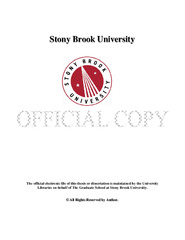Appropriating a People’s Movement: The Relationship Between Community Gardens and Gentrification in New York City
Appropriating a People’s Movement: The Relationship Between Community Gardens and Gentrification in New York City
| dc.identifier.uri | http://hdl.handle.net/11401/76809 | |
| dc.description.sponsorship | This work is sponsored by the Stony Brook University Graduate School in compliance with the requirements for completion of degree. | en_US |
| dc.format | Monograph | |
| dc.format.medium | Electronic Resource | en_US |
| dc.language.iso | en_US | |
| dc.publisher | The Graduate School, Stony Brook University: Stony Brook, NY. | |
| dc.type | Dissertation | |
| dcterms.abstract | In this dissertation, I study the intersection of community gardens with gentrification. In much of the gentrification scholarship, gentrification was studied from the macro level and was thought to result from changes in the housing market, hence being viewed as a top-down process in which the elite revitalized decaying urban neighborhoods by bringing capital into these areas and building higher end housing and services or was driven by consumer choices of privileged individuals (Smith 1979; Ley 1981). Some scholars maintained a connection between community gardens and gentrification, by insisting that gardens helped facilitate gentrification (Martinez 2010; Weissman 2012). I take this argument further by contending that gentrification was a much more complex process by examining the ways in which the low-income people’s efforts in reclaiming their blighted and decaying neighborhoods by building community gardens in the 1970s and 1980s led to gentrification in the 1990s and beyond. Indeed, real estate developers were predators of the people’s efforts and the people helped to subsidize the revitalization of the city. The gardeners certainly did not cause gentrification to occur, but their efforts in revitalizing their neighborhoods had a significant role in the process of gentrification that has been overlooked by researchers. With this understanding, I argued that the city was indebted to community gardeners for their unpaid efforts in revitalizing the city and, since gentrification was permitted by city policies, that there needed to be stronger policy protections for the gardens. | |
| dcterms.abstract | In this dissertation, I study the intersection of community gardens with gentrification. In much of the gentrification scholarship, gentrification was studied from the macro level and was thought to result from changes in the housing market, hence being viewed as a top-down process in which the elite revitalized decaying urban neighborhoods by bringing capital into these areas and building higher end housing and services or was driven by consumer choices of privileged individuals (Smith 1979; Ley 1981). Some scholars maintained a connection between community gardens and gentrification, by insisting that gardens helped facilitate gentrification (Martinez 2010; Weissman 2012). I take this argument further by contending that gentrification was a much more complex process by examining the ways in which the low-income people’s efforts in reclaiming their blighted and decaying neighborhoods by building community gardens in the 1970s and 1980s led to gentrification in the 1990s and beyond. Indeed, real estate developers were predators of the people’s efforts and the people helped to subsidize the revitalization of the city. The gardeners certainly did not cause gentrification to occur, but their efforts in revitalizing their neighborhoods had a significant role in the process of gentrification that has been overlooked by researchers. With this understanding, I argued that the city was indebted to community gardeners for their unpaid efforts in revitalizing the city and, since gentrification was permitted by city policies, that there needed to be stronger policy protections for the gardens. | |
| dcterms.available | 2017-09-20T16:51:13Z | |
| dcterms.contributor | Fleming, Crystal | en_US |
| dcterms.contributor | Schwartz, Michael | en_US |
| dcterms.contributor | Marrone, Catherine | en_US |
| dcterms.contributor | Guptill, Amy. | en_US |
| dcterms.creator | Lal, Prita | |
| dcterms.dateAccepted | 2017-09-20T16:51:13Z | |
| dcterms.dateSubmitted | 2017-09-20T16:51:13Z | |
| dcterms.description | Department of Sociology | en_US |
| dcterms.extent | 193 pg. | en_US |
| dcterms.format | Application/PDF | en_US |
| dcterms.format | Monograph | |
| dcterms.identifier | http://hdl.handle.net/11401/76809 | |
| dcterms.issued | 2016-12-01 | |
| dcterms.language | en_US | |
| dcterms.provenance | Made available in DSpace on 2017-09-20T16:51:13Z (GMT). No. of bitstreams: 1 Lal_grad.sunysb_0771E_13064.pdf: 1323610 bytes, checksum: bdb68f7c3965dae9b5de319f4d359295 (MD5) Previous issue date: 1 | en |
| dcterms.publisher | The Graduate School, Stony Brook University: Stony Brook, NY. | |
| dcterms.subject | Sociology -- Environmental justice -- Black studies | |
| dcterms.title | Appropriating a People’s Movement: The Relationship Between Community Gardens and Gentrification in New York City | |
| dcterms.title | Appropriating a People’s Movement: The Relationship Between Community Gardens and Gentrification in New York City | |
| dcterms.type | Dissertation |

